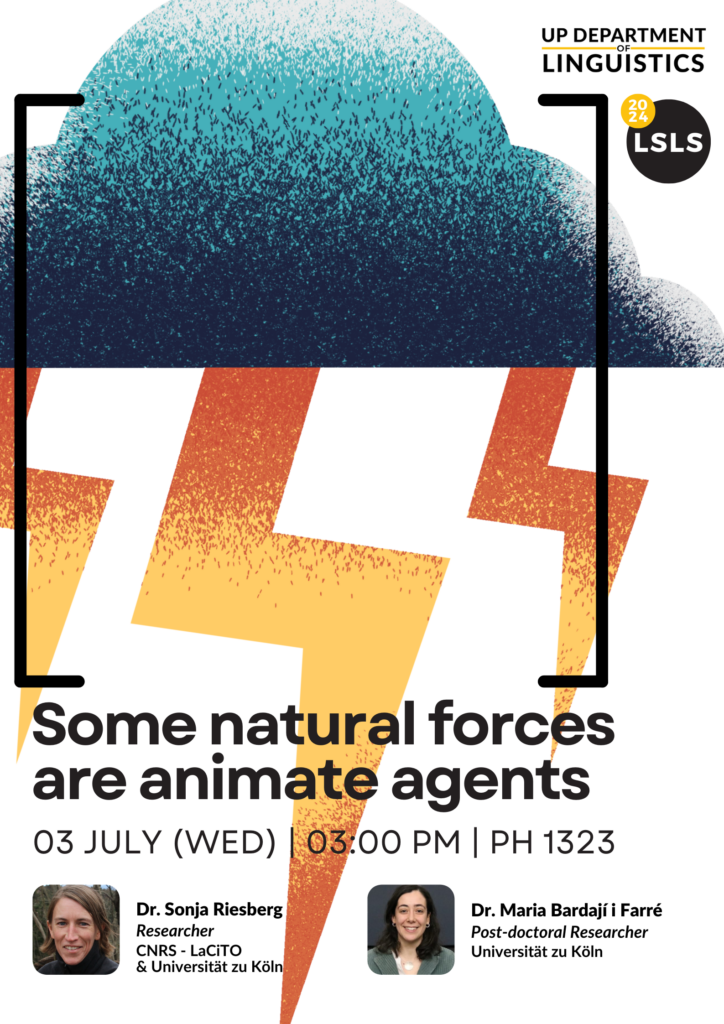Some natural forces are animate agents | LSLS
- Date: 3 Jul 2024 | 3:00 PM - 4:30 PM

Languages of the world might make a grammatical distinction between animate and inanimate referents at different levels of grammar. This distinction is manifest in a broad range of grammatical phenomena where expressions referring to animate referents show a different grammatical behavior than expressions referring to inanimate referents (e.g. split-ergative systems, plural formation, etc.). The well-known animacy hierarchy is one widely used construct to account for the manifold manifestation of this distinction (cp. Yamamoto 1999).
While the basic structure of this hierarchy is clear, with humans being more prominent than non-human animates, which in turn are more prominent than inanimates, there are many details that are still unresolved. One of these issues concerns the status of natural forces such as the wind, the storm or the sun, generally considered inanimate referents. It has been noted in several grammars that whenever constructional options for animate and inanimate arguments differ, natural forces might pattern with animate arguments.
In this talk, we will provide cross-linguistic evidence for the claim that some natural forces regularly behave like animate agents. We will support this observation by means of grammar data from western Austronesian languages (mostly Tagalog and Totoli), a brief cross-linguistic grammar review, and experimental data from Turkish. We will also show that not all natural forces seem to behave in the same way: some seem to pattern with animate agents, some with inanimate, and some may pattern with both. Finally, we will argue that understanding the features of the two or three classes of natural forces might help to refine the theories of grammatical animacy and agentivity.
